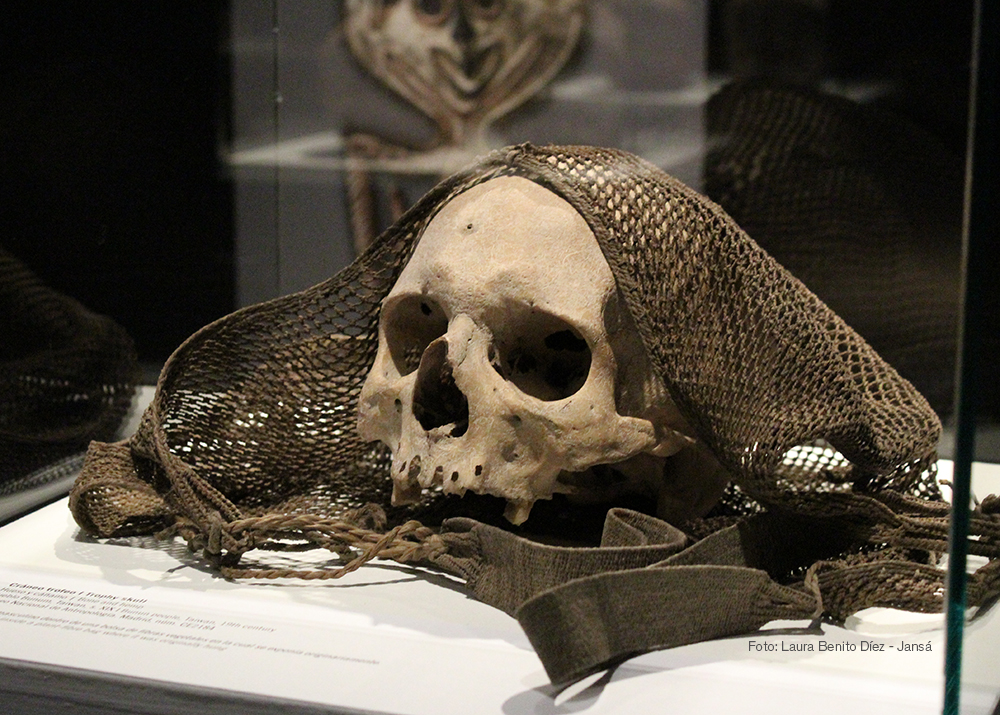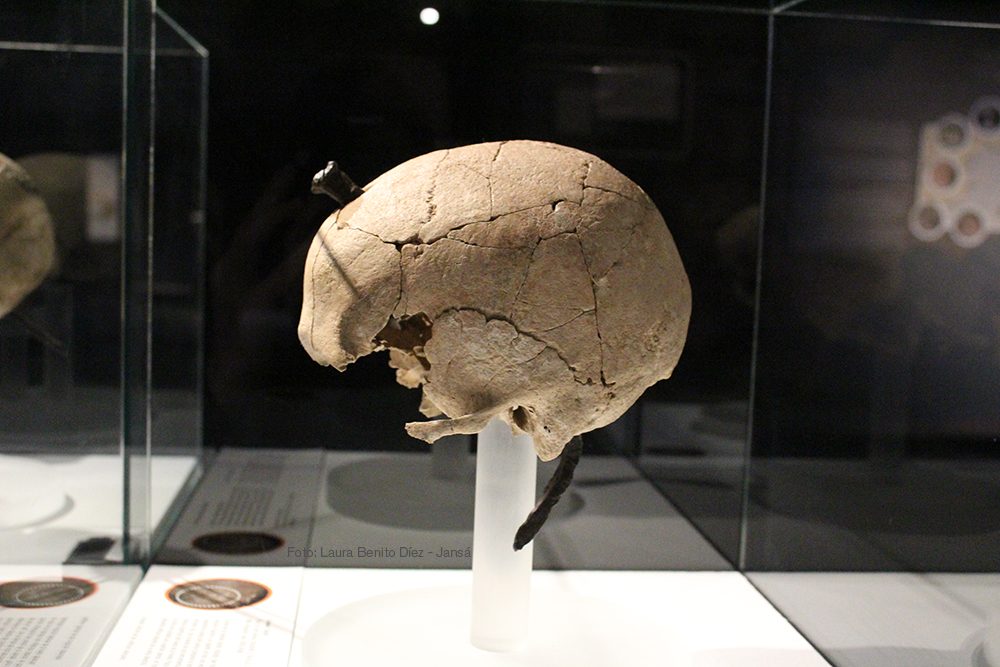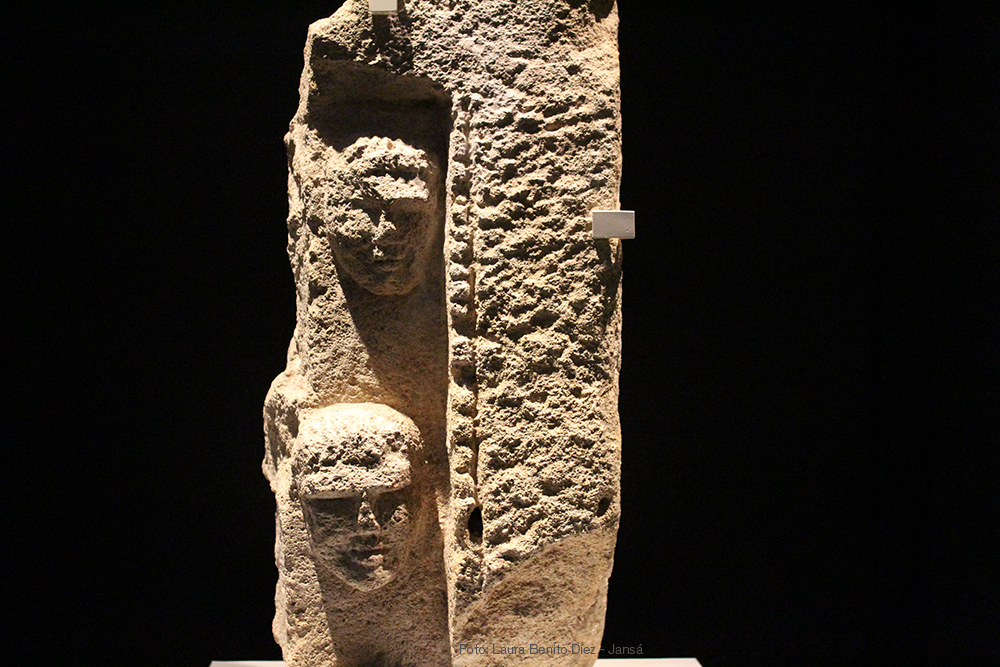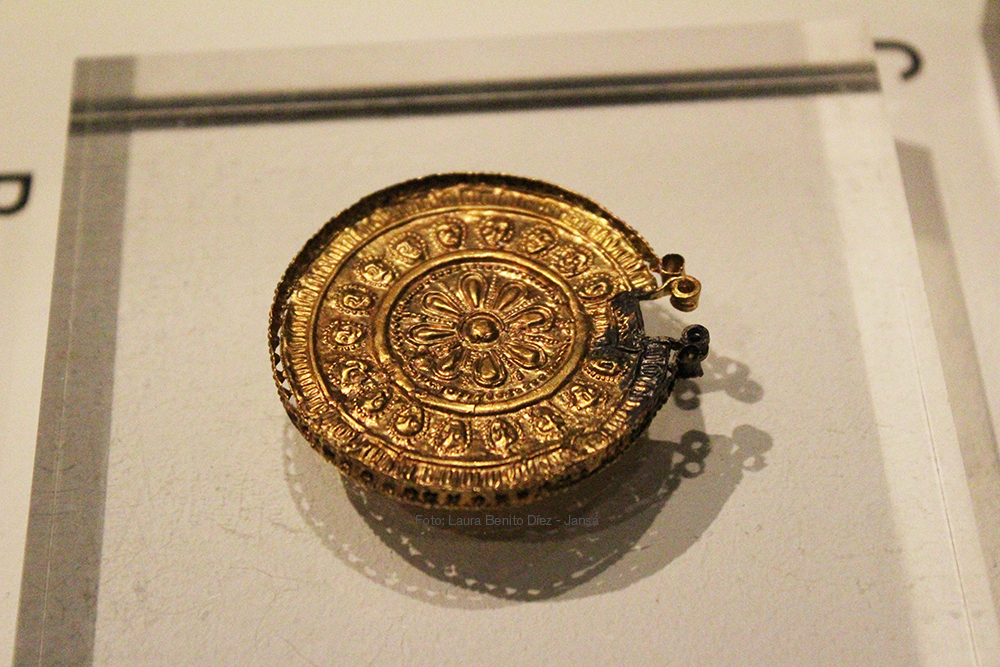Carlos
Banned
- Messages
- 2,647
- Reaction score
- 700
- Points
- 0
- Y-DNA haplogroup
- E-V22/YF66572
- mtDNA haplogroup
- J1c5c1
'Cut heads. Symbols of power 'arrives at the National Archaeological Museum
The exhibition, produced by the Museu d'Arqueologia de Catalunya, can be seen in Madrid until September 1
An enormously powerful symbol that accompanies us from Prehistory to the present. The head as an element of veneration or derision, as a symbol of homage or war victory. Starting from the heads beheaded and located in public and prominent places in the Iberian villages of Puig Castellar (Barcelona) and Puig de Sant Andreu (Girona), the curators of this exhibition invite us to reflect on these symbols of violence among human groups that they are not circumscribed to seniority. This documented practice among southern Celts, Laietans and Indiketas, has had its reflection throughout our history, reaching the most recent war conflicts in our world today. Together with the symbolism and meaning of the severed heads, we also enter into the funerary world and the iconography of these Iberian tribes, and in the reconstruction of the aspect of their people. Highly recommended both from the historical and anthropological point of view.



It treats this exhibition of a symbol of universal character, and this is how it is transmitted to us by its curators through the initial part of the exhibition, which includes examples from very different parts of the world that reflect the importance of the heads of the deceased. Among them we observe two aspects, as pointed out by Carme Rovira-Hortalá, curator of the exhibition by the Museu d'Arqueologia de Catalunya. On the one hand, the heads of the ancestors, venerated, treated with special care for their preservation, and to whom it was a question of reconstructing their vital features by means of additions. And on the other, the heads of the enemies, the vanquished, who receive humiliating treatment, and who symbolize the power of those who possess them.

Looking at the roots of our culture face to face
From this general context, which crosses cultures and chronologies throughout our world, we come to the nucleus of the sample, constituted by the sets of 'interlocking skulls' from two important populations of the northeast of the peninsula, the Layetano village of Puig Castellar (Santa Coloma de Gramanet, Barcelona) and the Indiketa site of Puig de Sant Andreu (Ullastret, Girona). These skulls are characterized by having been intentionally separated from the rest of the body and later pierced by large iron nails, of which examples of up to 23 centimeters in length are known. The function of these nails was to fix the skulls, once flayed and prepared, in prominent places in the villages, where they served as a sign of power and as a warning.
This tradition has been documented in a very specific area, in the peninsular northeast and south of the current French territory, together with some sporadic find in Central Europe. Classical sources have always associated this type of rites with the Celtic culture of southern Gaul, and archaeological excavations show that it extended into the adjacent Iberian territory, where more and more evidence of this practice is found. In this zone settled the tribes of Laietana and Indiketas.


Recovering the aspect of the Iberians
Curiously, these heads are the best opportunity for researchers to recover the physiognomies of these people. This is mainly due to their funerary customs. On the one hand, only a small percentage of society was buried. And those who were buried first went through a process of cremation that reduced their bones to tiny fragments and ashes.
In 2012, a deep process of study and analysis was initiated to recover as much information as possible from the best preserved heads. We have identified and analyzed traumas probably received in combat and cutting marks derived from the process carried out prior to their public exposure, evidences of pathologies have been analyzed, and the sex and age of the remains have been identified. DNA tests have also been carried out in search of kinship ties, and isotope analysis to try to determine its origin and dietary guidelines.
A face of the past
In the case of one of the skulls from Ullastret, a facial reconstruction hypothesis has been carried out. It was a young man, between 16 and 18 years old, who died in the late third or early second century BC. One of the audiovisuals of the exhibition shows the process to the photorealistic finish, for which features such as eyes or hair are recreated, of which there is no evidence.


The complex funerary world and Iberian ritual
The exhibition dedicates an important space to the funeral customs of the Iberian tribes, during which the corpse went through a complex process to finish depositing its ashes inside an urn, accompanied by amortized weapons, elements of adornment, food and offerings.




The iconographic representations that have come down to us from the Iberian peoples belong to the sphere of rituality, and they are markedly idealized representations. The female ex-votos represent generic features in front of a careful detail in the garments and elements of adornment. And the men usually represent warriors wearing their panoply.
One of the decorated ceramic pieces that can be seen in the exhibition exhibits the only representation of a decapitation known to date. Unfortunately it is a very fragmented piece, of which only a small part is preserved.
A symbology that crosses space-time borders
The last part of the exhibition proposes a reflection on the iconography of beheadings from the ancient world to the present. As Gabriel de Prado, curator of the exhibition recalled, during the visit, in the most recent wars we have seen images in which the combatants still exhibit the heads of their enemies, both to instill terror and to express superiority. The different reproductions of images that make up this final block, where the severed heads are protagonists, illustrate the parallels of this phenomenon throughout space and time, becoming an icon of conflicts at a universal level.
About the exhibition
'Cut heads. Symbols of power 'will remain in the temporary exhibition hall of the National Archaeological Museum until next September 1. Their visiting hours are the same as those of the museum itself, from Tuesday to Saturday from 9:30 a.m. to 8:00 p.m., and Sundays and public holidays from 9:30 a.m. to 3:00 p.m. It also has guided tours (capacity of 20 seats) on Wednesdays and Fridays at 18:00. More information on the website of the museum itself.
https://arqueologiaenred.paleorama.es/2019/04/cabezas-cortadas-simbolos-del-poder.html
The exhibition, produced by the Museu d'Arqueologia de Catalunya, can be seen in Madrid until September 1
An enormously powerful symbol that accompanies us from Prehistory to the present. The head as an element of veneration or derision, as a symbol of homage or war victory. Starting from the heads beheaded and located in public and prominent places in the Iberian villages of Puig Castellar (Barcelona) and Puig de Sant Andreu (Girona), the curators of this exhibition invite us to reflect on these symbols of violence among human groups that they are not circumscribed to seniority. This documented practice among southern Celts, Laietans and Indiketas, has had its reflection throughout our history, reaching the most recent war conflicts in our world today. Together with the symbolism and meaning of the severed heads, we also enter into the funerary world and the iconography of these Iberian tribes, and in the reconstruction of the aspect of their people. Highly recommended both from the historical and anthropological point of view.



It treats this exhibition of a symbol of universal character, and this is how it is transmitted to us by its curators through the initial part of the exhibition, which includes examples from very different parts of the world that reflect the importance of the heads of the deceased. Among them we observe two aspects, as pointed out by Carme Rovira-Hortalá, curator of the exhibition by the Museu d'Arqueologia de Catalunya. On the one hand, the heads of the ancestors, venerated, treated with special care for their preservation, and to whom it was a question of reconstructing their vital features by means of additions. And on the other, the heads of the enemies, the vanquished, who receive humiliating treatment, and who symbolize the power of those who possess them.

Looking at the roots of our culture face to face
From this general context, which crosses cultures and chronologies throughout our world, we come to the nucleus of the sample, constituted by the sets of 'interlocking skulls' from two important populations of the northeast of the peninsula, the Layetano village of Puig Castellar (Santa Coloma de Gramanet, Barcelona) and the Indiketa site of Puig de Sant Andreu (Ullastret, Girona). These skulls are characterized by having been intentionally separated from the rest of the body and later pierced by large iron nails, of which examples of up to 23 centimeters in length are known. The function of these nails was to fix the skulls, once flayed and prepared, in prominent places in the villages, where they served as a sign of power and as a warning.
This tradition has been documented in a very specific area, in the peninsular northeast and south of the current French territory, together with some sporadic find in Central Europe. Classical sources have always associated this type of rites with the Celtic culture of southern Gaul, and archaeological excavations show that it extended into the adjacent Iberian territory, where more and more evidence of this practice is found. In this zone settled the tribes of Laietana and Indiketas.


Recovering the aspect of the Iberians
Curiously, these heads are the best opportunity for researchers to recover the physiognomies of these people. This is mainly due to their funerary customs. On the one hand, only a small percentage of society was buried. And those who were buried first went through a process of cremation that reduced their bones to tiny fragments and ashes.
In 2012, a deep process of study and analysis was initiated to recover as much information as possible from the best preserved heads. We have identified and analyzed traumas probably received in combat and cutting marks derived from the process carried out prior to their public exposure, evidences of pathologies have been analyzed, and the sex and age of the remains have been identified. DNA tests have also been carried out in search of kinship ties, and isotope analysis to try to determine its origin and dietary guidelines.
A face of the past
In the case of one of the skulls from Ullastret, a facial reconstruction hypothesis has been carried out. It was a young man, between 16 and 18 years old, who died in the late third or early second century BC. One of the audiovisuals of the exhibition shows the process to the photorealistic finish, for which features such as eyes or hair are recreated, of which there is no evidence.


The complex funerary world and Iberian ritual
The exhibition dedicates an important space to the funeral customs of the Iberian tribes, during which the corpse went through a complex process to finish depositing its ashes inside an urn, accompanied by amortized weapons, elements of adornment, food and offerings.




The iconographic representations that have come down to us from the Iberian peoples belong to the sphere of rituality, and they are markedly idealized representations. The female ex-votos represent generic features in front of a careful detail in the garments and elements of adornment. And the men usually represent warriors wearing their panoply.
One of the decorated ceramic pieces that can be seen in the exhibition exhibits the only representation of a decapitation known to date. Unfortunately it is a very fragmented piece, of which only a small part is preserved.
A symbology that crosses space-time borders
The last part of the exhibition proposes a reflection on the iconography of beheadings from the ancient world to the present. As Gabriel de Prado, curator of the exhibition recalled, during the visit, in the most recent wars we have seen images in which the combatants still exhibit the heads of their enemies, both to instill terror and to express superiority. The different reproductions of images that make up this final block, where the severed heads are protagonists, illustrate the parallels of this phenomenon throughout space and time, becoming an icon of conflicts at a universal level.
About the exhibition
'Cut heads. Symbols of power 'will remain in the temporary exhibition hall of the National Archaeological Museum until next September 1. Their visiting hours are the same as those of the museum itself, from Tuesday to Saturday from 9:30 a.m. to 8:00 p.m., and Sundays and public holidays from 9:30 a.m. to 3:00 p.m. It also has guided tours (capacity of 20 seats) on Wednesdays and Fridays at 18:00. More information on the website of the museum itself.
https://arqueologiaenred.paleorama.es/2019/04/cabezas-cortadas-simbolos-del-poder.html

